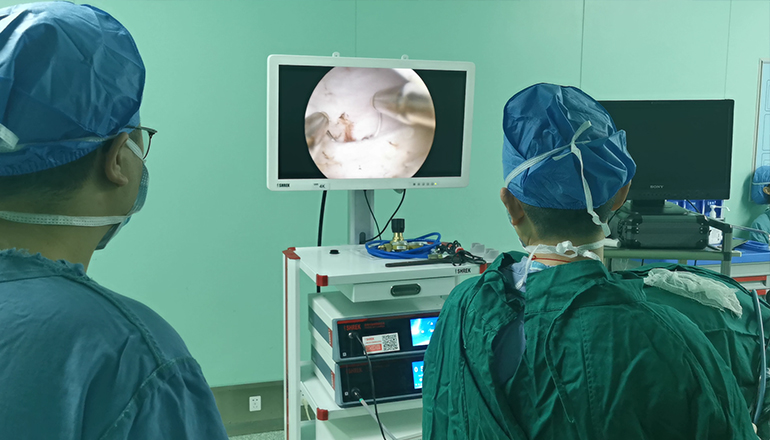- Shanghai, China
- [email protected]
- +86-21-58189111
Cystoscopy is a diagnostic and therapeutic procedure that allows visualization of the interior of the urinary bladder using a specialized instrument called a cystoscope. It is used to diagnose and treat a variety of conditions related to the bladder, urethra, and prostate. In order to perform a cystoscopy surgery, several pieces of endoscopic equipment are needed, including the cystoscope, light source, and camera.
Cystoscope: The cystoscope is the main instrument used in cystoscopy surgery. It is a long, thin, flexible or rigid tube with a light source and a lens at one end that allows the surgeon to see inside the bladder. There are several different types of cystoscopes, including rigid cystoscopes and flexible cystoscopes. Rigid cystoscopes are straight, inflexible instruments that are inserted into the bladder through the urethra. Flexible cystoscopes are more commonly used today and are easier to maneuver, allowing for better visualization of the bladder and its surrounding structures.
Light source: The light source is an essential component of cystoscopy surgery. It provides the light necessary to illuminate the inside of the bladder, allowing the surgeon to see clearly. The light source is usually connected to the cystoscope through a fiber optic cable that transmits the light from the source to the instrument.
Camera: In addition to the cystoscope and light source, a camera is also required for cystoscopy surgery. The camera is attached to the cystoscope and allows the surgeon to view the inside of the bladder on a monitor or screen. This provides a larger, clearer image than looking through the eyepiece of the cystoscope, and allows the surgeon to share the images with other members of the surgical team.

Other equipment that may be needed for cystoscopy surgery includes irrigation equipment to flush the bladder with saline solution, biopsy forceps to take tissue samples for examination, and electrocautery equipment to stop bleeding from any incisions made during the procedure.
The main pieces of endoscopic equipment needed for cystoscopy surgery are the cystoscope, light source, and camera. These instruments allow the surgeon to visualize the inside of the bladder and perform any necessary procedures, such as biopsies or electrocautery. Other equipment may also be needed depending on the specific needs of the surgery.
It is important that all endoscopic equipment used in cystoscopy surgery is properly maintained and sterilized to prevent infection and ensure patient safety. The equipment should be cleaned and disinfected between uses and sterilized using appropriate methods such as autoclaving or ethylene oxide gas sterilization.
In addition, the surgical team should be well-trained and experienced in the use of the equipment to ensure that the procedure is performed safely and effectively. This includes proper handling of the equipment, insertion and removal of the cystoscope, and interpretation of the images on the monitor.
In conclusion, cystoscopy surgery is a common procedure used to diagnose and treat bladder and urinary tract conditions. It requires specialized endoscopic equipment, including the cystoscope, light source, and camera, as well as other instruments such as irrigation equipment, biopsy forceps, and electrocautery equipment. Proper maintenance and sterilization of the equipment, as well as proper training of the surgical team, are essential for safe and effective cystoscopy surgery.
Leave a Comments